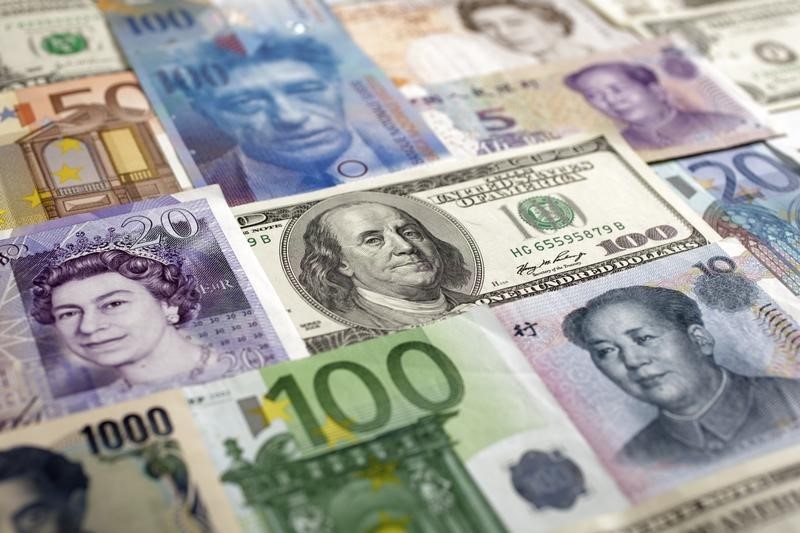
© Reuters.
By Geoffrey Smith
Investing.com — The dollar edged higher in early trade in Europe on Friday, but was still on course to end the week lower as the market consolidated around expectations of a smaller increase in interest rates from next week’s Federal Reserve meeting.
The release of slightly stronger than expected fourth quarter growth data from the U.S. on Thursday did little to change that calculus, with the breakdown of the numbers showing that slowed more than expected and the quarterly index for also fell surprisingly sharply.
“While inflation is still well above target and unemployment is at a cycle low, there are signs that the economy is responding to tighter monetary policy and the Fed will be cognisant of fears that hiking rates too hard and fast risks toppling the economy into recession,” analysts at ING said in a morning note.
Consensus is now firmly in favor of the raising the target range for fed funds by only 25 basis points next week, after already shifting from a 75 to 50 basis point increment at its last meeting in December. The release of the December price indices for – the Fed’s favored measure of inflation – at 08:30 ET (13:30 GMT) later will have to be a long way off the forecast 4.4% to change anyone’s minds at this stage.
Shifting expectations for Fed policy have underpinned European currencies on the crosses all week since the and the are both widely perceived as still needing to raise rates more in order to tame inflation.
Fourth quarter data are starting to dribble out from the Eurozone, with saying on Friday that its economy grew 0.2% in the period, in line with forecasts. Data from , , and – the Eurozone’s three largest economies – are due next week. The Deutsche Bundesbank has already said it estimates the German economy stagnated.
By 03:20 ET (08:20 GMT), the was down 0.2% at $1.0869, while the , which tracks the euro against a basket of six advanced economy currencies, was up 0.1% at 101.78.
Further afield, the spotlight is likely to be on Pakistan, where the tumbled some 10% on Thursday as the central bank – under pressure to defend its dwindling foreign reserves – abandoned attempts to defend its exchange rate with the dollar. The country was devastated last year by floods that wiped out much of its agricultural sector and also badly hit industry.
Liberalization of the exchange rate has been one of the International Monetary Fund’s chief conditions for resuming disbursements under a $7 billion financing package that was suspended last year.
